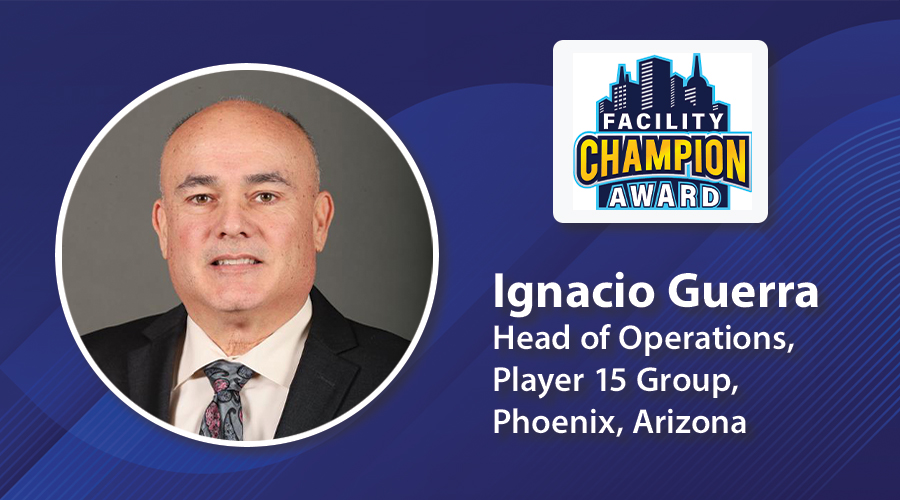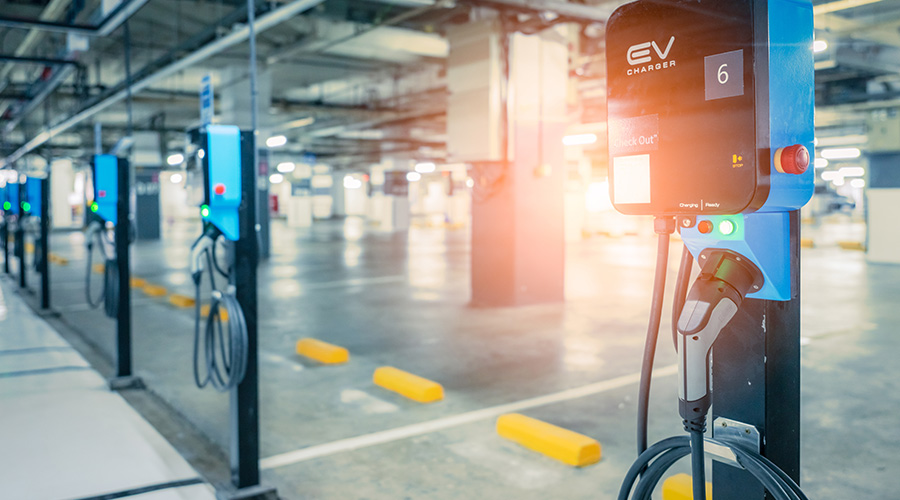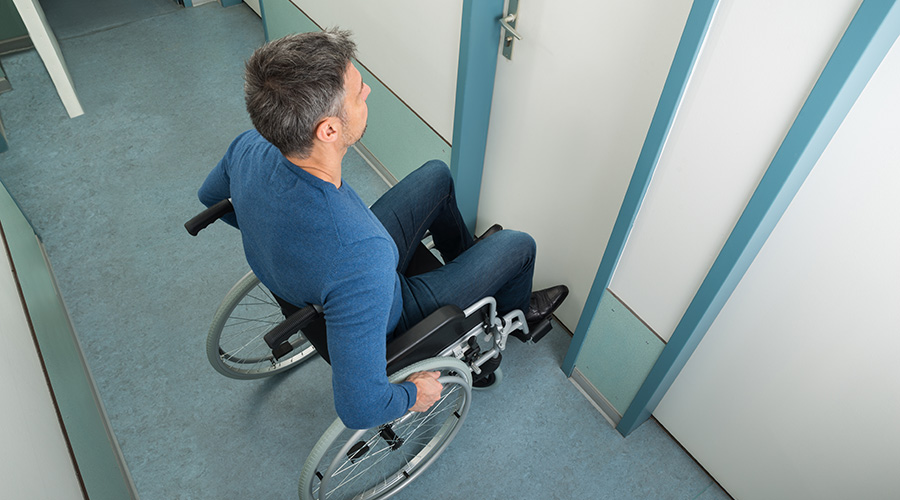…And Access for All
Upgrading and renovating facilities to comply with ADA can benefit all occupants and visitors
The concept of universal design is not new, but only now is it getting the attention it deserves. In its simplest form, universal design is an approach to the built environment, communications, products, services and environments so that as many people as possible can benefit from the process, regardless of age, ability or individual situation.
That seems simple and straightforward, right? One might argue that the primary goal of the Americans with Disabilities Act (ADA), which celebrated the 15th anniversary of its implementation this year, is simple: Do not discriminate against individuals with disabilities by designing, constructing or altering facilities that have barriers.
But that has not been the case. Architects and designers still produce buildings that do not comply with many basic tenets of ADA. If these parties have difficulties producing facilities constructed in compliance with a federal law, what chance do we have to get them to buy into the concept of universal design?
Well, much like green buildings and sustainable design, ADA and universal design make sense for a number of reasons, not only from the standpoint of meeting federal requirements and staving off lawsuits. The concept makes facilities more user-friendly for more people.
The task in this case for maintenance managers is to help architects and planners incorporate the concept in ways that both benefit visitors and occupants and keep facilities maintainable.
Universal Applications
Although accessibility is intended first and foremost to allow for the equal use and enjoyment of facilities for individuals with disabilities, it provides benefits for everyone. Examples are apparent throughout facilities.
The closed-captioning on televisions originally intended for people with hearing disabilities now appears more widely in health clubs and bars.
Family restrooms — those designed for one user at a time — also are helpful for parents with small children, particularly dads who don’t cherish taking their 6- or 7-year-old daughters into the men’s room. They also benefit wheelchair users who need the assistance of a family member or care attendant, as well as those of us with aging parents who require assistance.
Signs with large print, raised characters and pictograms are helpful for small children, people with failing eyesight, and those for whom English is not their first language.
Finally, everyone’s favorite example is the automatic-sensor power door. These products enable everyone to come in together while leaving hands and arms free to carry a cup of coffee, briefcase or child.
What challenges and opportunities do maintenance managers face in planning to incorporate universal design into a facility? Remember, the ADA is a requirement, so that must always be the baseline. Using the ADA requirements as a baseline, managers can use the opportunity that universal design presents to expand on ways facilities can be more usable to more people.
Several examples are most informative, and some offer managers straightforward and low-cost options.
Parking
The use of placards indicating handicapped parking is on the rise in garages and lots. But senior citizens who have difficulty walking or health problems that are not readily obvious — such as emphysema or heart disease — often use them, as well.
ADA provides a numerical table to help managers determine the required number of reserved accessible van and car spaces. These are minimum standards, so if space is available, managers can include additional spaces.
And if a facility has multiple entrances or levels of parking, consider spreading these spaces out among the entrances or levels, making sure all additional spaces meet the requirements and include access aisles and signs.
Exterior Areas
Sidewalks, parking lots, pathways and other areas of pedestrian travel are critical areas for proper maintenance. This work might take place during the winter months to ensure that walking surfaces are clear and dry and that plowed snow is not deposited into the accessible parking spaces or at the bottom of curb ramps.
But it also is important to make sure that walking surfaces are kept smooth and free of gaps, cracks and other obstacles. These present trip hazards for anyone, particularly those who have trouble seeing or walking. They then become a risk-management problem for the organization.
Entrances
Heavy doors can generate the most complaints from people using buildings. Even though a large number of factors go into designing an exterior entrance, managers have options that can help all occupants and visitors.
Power-assisted door operators have become more cost-effective and cost-efficient. Again, from a universal user standpoint, delivery personnel, sales people and those pulling briefcases and PCs on wheeled cases are the heaviest users of these doors.
For airlock or interior doors, checking door closers regularly can mitigate complaints. Make sure that door operation requires a force of 5 pounds or less.
Restrooms
Manufacturers and sustainable-design proponents have been leading the charge in this area of facilities. Many of the changes and new technology available with restroom amenities and elements also are user friendly for all people, including those with disabilities.
Toilets with automatic-sensor flush eliminate the need for a flush valve, but they also eliminate one of the most common design and construction mistakes under the ADA — that the flush valve must be on the wide side of the stall or room.
Motion-activated light sensors also save energy and prevent questions about where to install the light switch.
Sinks with automatic water also eliminate the worry of having the wrong type of faucet hardware. But managers need to make sure that all other elements of a sink remain accessible.
Motion-activated paper towel dispensers also are useful, but it is unclear how individuals with visual disabilities can fully access them. But again, make sure installers mount these units in a location and at a height at which everyone can use them.
People with a range of disabilities use facilities each day. But managers never really know who they are, what their capabilities or limitations are, or what those might be tomorrow or the next day.
The very best that managers can do as facility professionals is to ensure that buildings provide a safe, usable and enjoyable environment for these individuals to enter everyday as employees, tenants, customers and visitors. By doing that, managers will have embraced universal design.
Joan W. Stein is the president and CEO of Accessibility Development Associates Inc. (ADA Inc.), a Pittsburgh-based ADA consulting firm. The firm has been providing a range of ADA consulting services nationwide since 1992.
The Bottom-Line Case for Universal Design
One important selling point for maintenance managers trying to promote universal design is the market that uses institutional and commercial facilities.
According to the U.S. Department of Labor, people with disabilities have $175 billion in discretionary income a year. That amount represents a greater market than both teens and “tweens” combined.
Also, the American Association of Retired Persons reports that 4 million people turn 50 each year, and in 2003 these individuals had $400 billion in disposable income.
And a study by the Open Doors Organization estimates in 2003 that diners with disabilities spent $35 billion in restaurants that year. The study found that more than 75 percent of people with disabilities eat out at restaurants at least once a week.
Finally, The New York Times reports that spending by travelers with disabilities exceeds $13.6 billion annually.
These numbers should make a very good business case for quantifying the return on the investment in universal design.
Consider the quote from the movie Field of Dreams — “If you build it, they will come.” When it comes to accessibility and universal design, add two more points: Build it right, and then tell people that you built it.
— Joan W. Stein
|
Related Topics:











